Thingiverse

CERN's CMS Detector by 3dalex3
by Thingiverse
Last crawled date: 3 years, 1 month ago
The Compact Muon Solenoid (CMS) detector is one of the big four experiments of the Large Hadron Collider (LHC), the world’s largest and most powerful particle accelerator. The LHC is part of CERN's accelerator complex in Geneva, Switzerland. The detector is located 100 meters underground near Cessy, France, at the opposite end of the LHC from ATLAS detector. It is 15 meters high and 21 meters long, and it weighs 14,000 tonnes.
This 120:1 scale model shows CMS' most important components. It is based on the original Technical Design Reports and the SketchUpCMS project. It was originally modeled by James Wetzel, W.G. Wetzel and Nick Arevalo with a grant from Don Lincoln.
Objective of CMS
CMS is a general-purpose detector with a broad physics programme ranging from studying the Standard Model (including the Higgs boson) to searching for extra dimensions and particles that could make up dark matter.
Components
The CMS detector is shaped like a cylindrical onion, with several concentric layers of components. These components help prepare “photographs” of each collision event by determining the properties of the particles produced in that particular collision.
Particle collisions occur at the very center of the detector, within the LHC accelerator's beam pipes. Inside the accelerator, two high-energy particle beams travel at close to the speed of light before they are made to collide. The beams travel in opposite directions in separate beam pipes – two tubes kept at ultrahigh vacuum. They are guided around the accelerator ring by a strong magnetic field maintained by superconducting electromagnets.
The CMS detector is built around a huge solenoid magnet. This takes the form of a cylindrical coil of superconducting cable that generates a field of 4 tesla, about 100,000 times the magnetic field of the Earth. The field is confined by a steel “yoke” that forms the bulk of the detector’s 14,000-tonne weight.
CMS acts as a giant, high-speed camera, taking 3D “photographs” of particle collisions from all directions up to 40 million times each second. Although most of the particles produced in the collisions are “unstable”, they transform rapidly into stable particles that can be detected by CMS. By identifying (nearly) all the stable particles produced in each collision, measuring their momenta and energies, and then piecing together the information of all these particles like putting together the pieces of a puzzle, the detector can recreate an “image” of the collision for further analysis.
Here is a brief description of each component represented in the model, as seen from the inside out:
Barrel_6_Tracker.stl
The Silicone Tracker is made of around 75 million individual electronic sensors arranged in concentric layers. When a charged particle flies through the Tracker layer, it interacts electromagnetically with the silicon and produces a hit -- these individual hits can then be joined together to identify the track of the traversing particle.
Barrel_5_ECAL.stl
The Electromagnetic Calorimeter (ECAL) measures the energy of electrons and photons by stopping them completely.
Barrel_4_HCAL.stl
The Hadron Calorimeter (HCAL) measures the energy of “hadrons”, particles made of quarks and gluons (for example protons, neutrons, pions and kaons).
Barrel_3_Solenoid_2.0.stl
The solenoid magnet, formed by a cylindrical coil of superconducting fibres. When electricity (18,500 amps!) is circulated within these coils, they generate a magnetic field of around 4 tesla. This solenoid is the largest magnet of its type ever constructed.
Barrel_2_Yoke.stl
The steel yoke that confines the high magnetic field to the volume of the detector.
Barrel_1_Muons_2.0.stl
The muon chambers, one of the most important components of CMS. There are two different types of muon detectors in the barrel, Drift Tubes (DTs) and Resistive Plate Chambers (RPCs).
Endcap_Full.stl and Endcap_Quarter.stl
The endcaps "close" the ends of the barrel. They are made of alternating layers of steel yoke and muon chambers, composed of Cathode Strip Chambers (CSCs) and Resistive Plate Chambers (RPCs).
HF_Full.stl and HF_Quarter.stl
The Hadronic Forward calorimeters (HF), part of the HCAL system, pick up the myriad particles coming out of the collision region at shallow angles relative to the beam line.
Airpad-16.stl
A compressed-air powered piston system to lift the endcaps when moving them into position. Each pad can lift ~350 tonnes!
Barrel_Feet-2.stl, Endcap_Feet-2.stl, HF_Riser-8.stl and HF_Table-2.stl
Support structures.
This 120:1 scale model shows CMS' most important components. It is based on the original Technical Design Reports and the SketchUpCMS project. It was originally modeled by James Wetzel, W.G. Wetzel and Nick Arevalo with a grant from Don Lincoln.
Objective of CMS
CMS is a general-purpose detector with a broad physics programme ranging from studying the Standard Model (including the Higgs boson) to searching for extra dimensions and particles that could make up dark matter.
Components
The CMS detector is shaped like a cylindrical onion, with several concentric layers of components. These components help prepare “photographs” of each collision event by determining the properties of the particles produced in that particular collision.
Particle collisions occur at the very center of the detector, within the LHC accelerator's beam pipes. Inside the accelerator, two high-energy particle beams travel at close to the speed of light before they are made to collide. The beams travel in opposite directions in separate beam pipes – two tubes kept at ultrahigh vacuum. They are guided around the accelerator ring by a strong magnetic field maintained by superconducting electromagnets.
The CMS detector is built around a huge solenoid magnet. This takes the form of a cylindrical coil of superconducting cable that generates a field of 4 tesla, about 100,000 times the magnetic field of the Earth. The field is confined by a steel “yoke” that forms the bulk of the detector’s 14,000-tonne weight.
CMS acts as a giant, high-speed camera, taking 3D “photographs” of particle collisions from all directions up to 40 million times each second. Although most of the particles produced in the collisions are “unstable”, they transform rapidly into stable particles that can be detected by CMS. By identifying (nearly) all the stable particles produced in each collision, measuring their momenta and energies, and then piecing together the information of all these particles like putting together the pieces of a puzzle, the detector can recreate an “image” of the collision for further analysis.
Here is a brief description of each component represented in the model, as seen from the inside out:
Barrel_6_Tracker.stl
The Silicone Tracker is made of around 75 million individual electronic sensors arranged in concentric layers. When a charged particle flies through the Tracker layer, it interacts electromagnetically with the silicon and produces a hit -- these individual hits can then be joined together to identify the track of the traversing particle.
Barrel_5_ECAL.stl
The Electromagnetic Calorimeter (ECAL) measures the energy of electrons and photons by stopping them completely.
Barrel_4_HCAL.stl
The Hadron Calorimeter (HCAL) measures the energy of “hadrons”, particles made of quarks and gluons (for example protons, neutrons, pions and kaons).
Barrel_3_Solenoid_2.0.stl
The solenoid magnet, formed by a cylindrical coil of superconducting fibres. When electricity (18,500 amps!) is circulated within these coils, they generate a magnetic field of around 4 tesla. This solenoid is the largest magnet of its type ever constructed.
Barrel_2_Yoke.stl
The steel yoke that confines the high magnetic field to the volume of the detector.
Barrel_1_Muons_2.0.stl
The muon chambers, one of the most important components of CMS. There are two different types of muon detectors in the barrel, Drift Tubes (DTs) and Resistive Plate Chambers (RPCs).
Endcap_Full.stl and Endcap_Quarter.stl
The endcaps "close" the ends of the barrel. They are made of alternating layers of steel yoke and muon chambers, composed of Cathode Strip Chambers (CSCs) and Resistive Plate Chambers (RPCs).
HF_Full.stl and HF_Quarter.stl
The Hadronic Forward calorimeters (HF), part of the HCAL system, pick up the myriad particles coming out of the collision region at shallow angles relative to the beam line.
Airpad-16.stl
A compressed-air powered piston system to lift the endcaps when moving them into position. Each pad can lift ~350 tonnes!
Barrel_Feet-2.stl, Endcap_Feet-2.stl, HF_Riser-8.stl and HF_Table-2.stl
Support structures.
Similar models
3dwarehouse
free

Large Hadron Collider Dipole Section.
...high vacuum. they are guided around the accelerator ring by a strong magnetic field maintained by superconducting electromagnets.
3dwarehouse
free
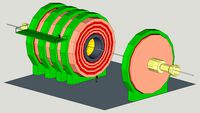
Experiment CMS at LHC. CERN.
...ensions, and particles that could make up dark matter. cms is 21.6 metres long, 15 m in diameter, and weighs about 14,000 tonnes.
3dwarehouse
free

My version of a particle accelerator. (not done!! (yet))
...lar #circular_particle_accelerator #collider #hadron #large #large_hadron_collider #lhc #particle #particle_accelerator #tevatron
3dwarehouse
free

Barrel Electromagnetic Calorimeter
...barrel electromagnetic calorimeter
3dwarehouse
dynamically configurable electromagnetic calorimeter for detector modeling.
3dwarehouse
free

HCAL Sector
...hcal sector
3dwarehouse
building block for constructing a dynamic hadron calorimeter end cap using 24 segments.
3dwarehouse
free

Large Electromagnetic Calorimeter
...large electromagnetic calorimeter
3dwarehouse
a simpler dynamic component representing a scalable electromagnetic calorimeter.
thingiverse
free

(Tactile) Particle Detector Jigsaw by tactilecollider
...y three shell pieces. each piece will stop one type of particle - the particles are represented by the beams of differing shapes.
thingiverse
free

3D Detector Model by tactilecollider
...3d detector model by tactilecollider
thingiverse
this is a model piece of a detector from the lhc (large hadron collider, cern).
3dwarehouse
free

Two Part Barrel Hadron Calorimeter
...dron calorimeter
3dwarehouse
this barrel hadron calorimeter has two distinct sections, each of which has a separate bore radius.
3dwarehouse
free

Hadron Calorimeter Endcap
...hadron calorimeter endcap
3dwarehouse
dynamic hadron calorimeter endcap
3Dalex3
thingiverse
free

RAK831 Case by 3dalex3
...rak831 case by 3dalex3
thingiverse
remix with no ventilation holes on top or bottom.
thingiverse
free

Outdoor housing for Xiaomi/Aqara temperature sensor by 3dalex3
... top, bottom and middle pieces snap together, and the sensor holder can be ziptied to the box and wherever you want to attach it.
thingiverse
free

Entangled Notification Lights by 3dalex3
...e through a home assistant instance, but a similar thing can be done with plain arduino and direct communication between the two.
Cern
turbosquid
free

CERN DONOUTS.max
... available on turbo squid, the world's leading provider of digital 3d models for visualization, films, television, and games.
turbosquid
$24

Beer Can Krusovice Cerne 500ml
...e 3d model beer can krusovice cerne 500ml for download as max on turbosquid: 3d models for games, architecture, videos. (1253483)
thingiverse
free

CERN logo by micromachine
...cern logo by micromachine
thingiverse
cern logo
3dbaza
$3

CERNE Coffee table (124068)
...cerne coffee table (124068)
3dbaza
cerne coffee table 3d model
thingiverse
free

CERN Marble Track by kbpiper01
... took me about 5-10 hours, compared to most of my .5-1 hour designs. anyway, this is the result and i think it seems pretty cool.
thingiverse
free

WimClip III OHL CERN by wimfrombelgium
...ether postcards.
it improves upon a normal paperclip by being double sided.
created by wimfrombelgium
digitized by district three
thingiverse
free

CERN FIRE BRIGADE BADGE by micromachine
...ne in color and one in bronzefill. i put a magnet and the plastic one hangs on the fridge. i am sure my colleagues will love it:)
thingiverse
free

3D Detector Model by tactilecollider
...of a detector from the lhc (large hadron collider, cern. ...
thingiverse
free

Higgs by Ablapo
...higgs by ablapo thingiverse made with tinkercad.com recently cern talks alot about higgs things. now i made one...
Detector
3d_export
free

metal detector
...metal detector
3dexport
metal detector
turbosquid
$15
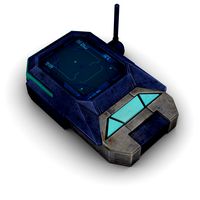
Detector
...urbosquid
royalty free 3d model detector for download as max on turbosquid: 3d models for games, architecture, videos. (1151943)
turbosquid
$7
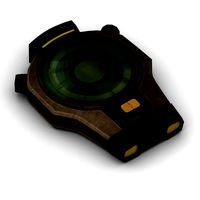
detector
...urbosquid
royalty free 3d model detector for download as max on turbosquid: 3d models for games, architecture, videos. (1151938)
archive3d
free
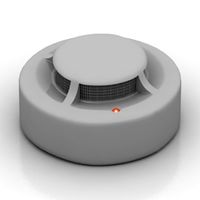
Detector 3D Model
...fire alarm system
detector fire n170216 - 3d model (*.gsm+*.3ds) for interior 3d visualization.
archive3d
free

Detector 3D Model
...io-metal locator
detector metal n250314 - 3d model (*.gsm+*.3ds) for interior 3d visualization.
archive3d
free

Detector 3D Model
...em
detector fire ipr ipr 513-3a n310116 - 3d model (*.gsm+*.3ds) for interior 3d visualization.
3d_export
$8
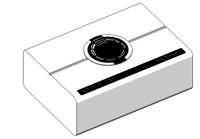
detector de temperatura
...detector de temperatura
3dexport
detector de temperatura marca vesda
turbosquid
$10
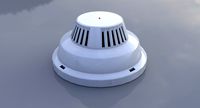
Smoke detector
...uid
royalty free 3d model smoke detector for download as fbx on turbosquid: 3d models for games, architecture, videos. (1498046)
turbosquid
$7
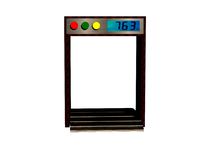
Metal detector
...uid
royalty free 3d model metal detector for download as 3ds on turbosquid: 3d models for games, architecture, videos. (1187155)
turbosquid
$25
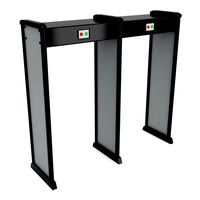
Metal detector scanner. Safe area double security gates with metal detectors. Walk through detector.
...detectors. walk through detector. for download as max and obj on turbosquid: 3d models for games, architecture, videos. (1646502)
Cms
turbosquid
$6

bench 120 cm x 24 cm x 28 cm
...m x 24 cm x 28 cm for download as c4d, 3ds, dxf, fbx, and obj on turbosquid: 3d models for games, architecture, videos. (1593009)
turbosquid
$5

instruction table140 cm x 70 cm x 76 cm
...m x 70 cm x 76 cm for download as c4d, 3ds, dxf, fbx, and obj on turbosquid: 3d models for games, architecture, videos. (1593138)
turbosquid
$5
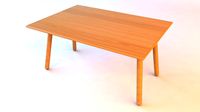
Table 120 cm x 84 cm x 59 cm.
... x 84 cm x 59 cm. for download as c4d, 3ds, dxf, fbx, and obj on turbosquid: 3d models for games, architecture, videos. (1593037)
design_connected
$13

CM 191
...connected
photo-realistic 3d models of the cm 191 table from ligne roset for 3d architectural and interior design presentations.
turbosquid
$10
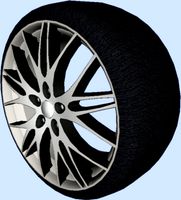
CMS C8
... available on turbo squid, the world's leading provider of digital 3d models for visualization, films, television, and games.
turbosquid
$10

Venetian Blind Rail 80 cm x 120 cm
...an blind with rail 80 cm x 120 cm for download as c4d and fbx on turbosquid: 3d models for games, architecture, videos. (1582451)
3ddd
$1

Miele CM 6300
... cm 6300
3ddd
miele , кофемашина
кофемашина miele cm 6300
3dsmax 2010; obj
polys: 28732
design_connected
$16

CM 131 Chair
...cm 131 chair
designconnected
ligne roset cm 131 chair computer generated 3d model. designed by paulin, pierre.
turbosquid
$5

Table 80x50x50 cm
... 3d model table 80x50x50 cm for download as 3ds, max, and fbx on turbosquid: 3d models for games, architecture, videos. (1301210)
3ddd
$1

Cavio библиотека CM 07
...cavio библиотека cm 07
3ddd
cavio
фабрика cavio, библиотека cm 07
